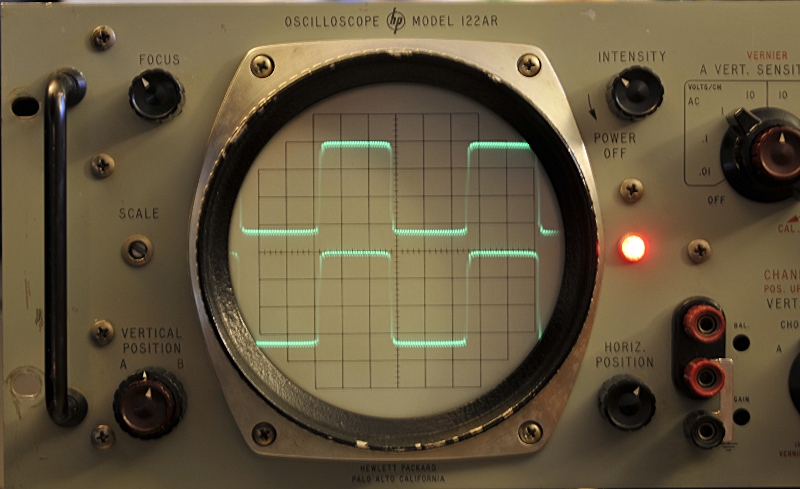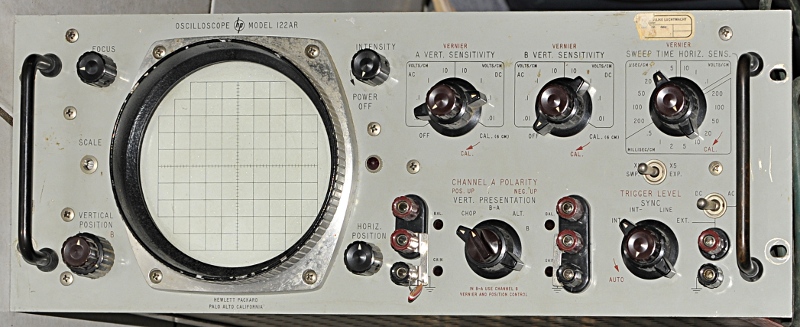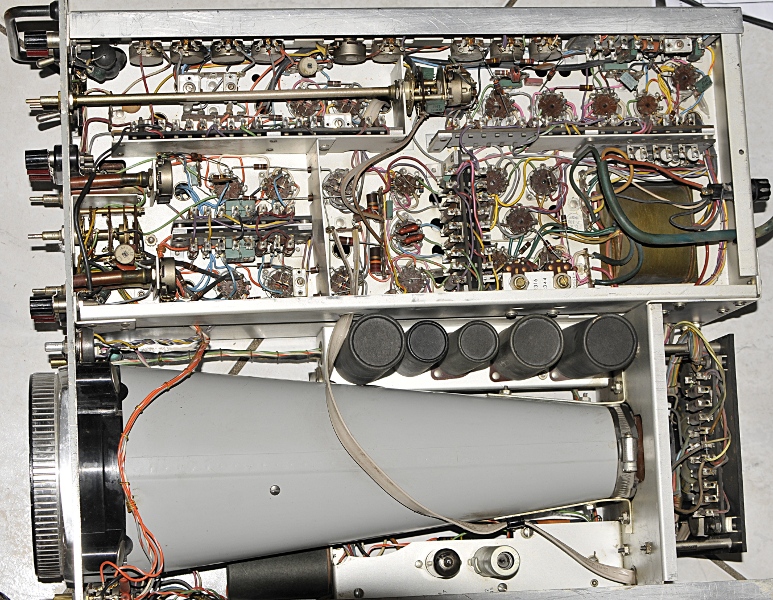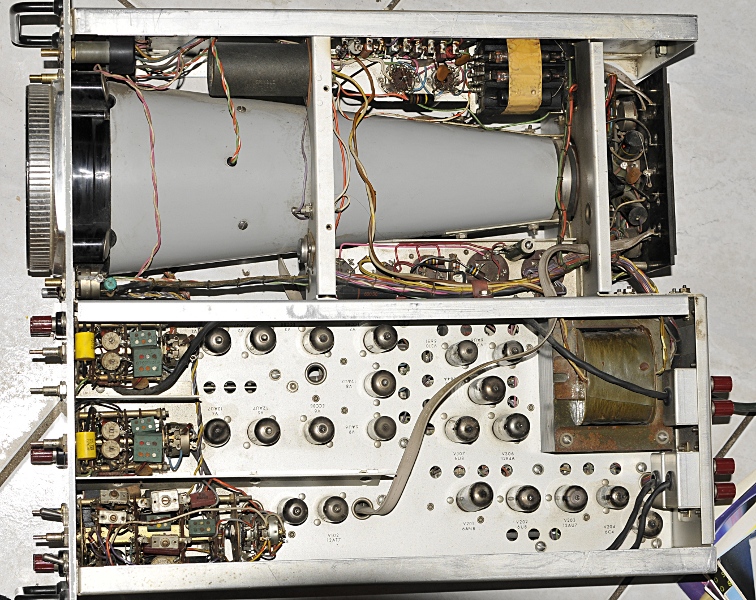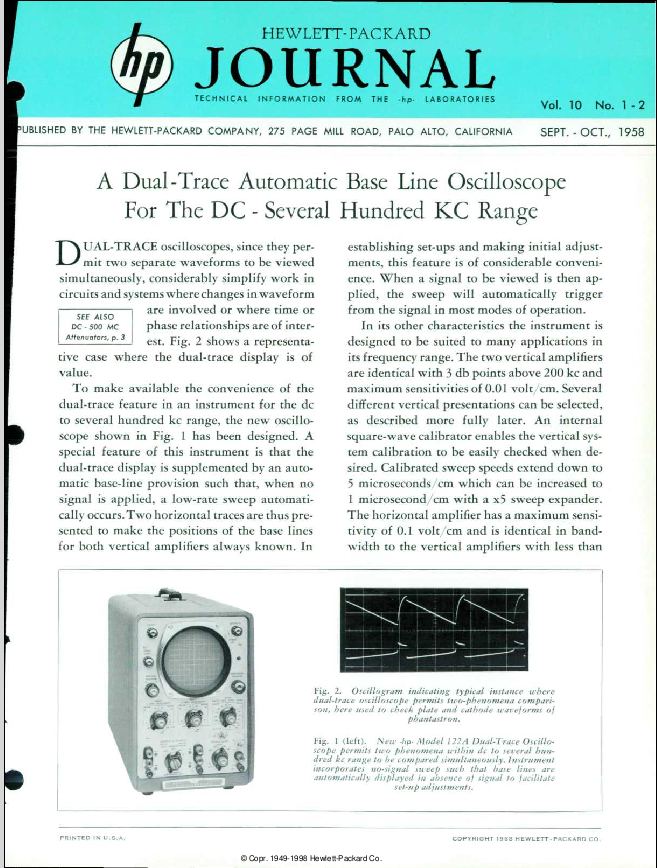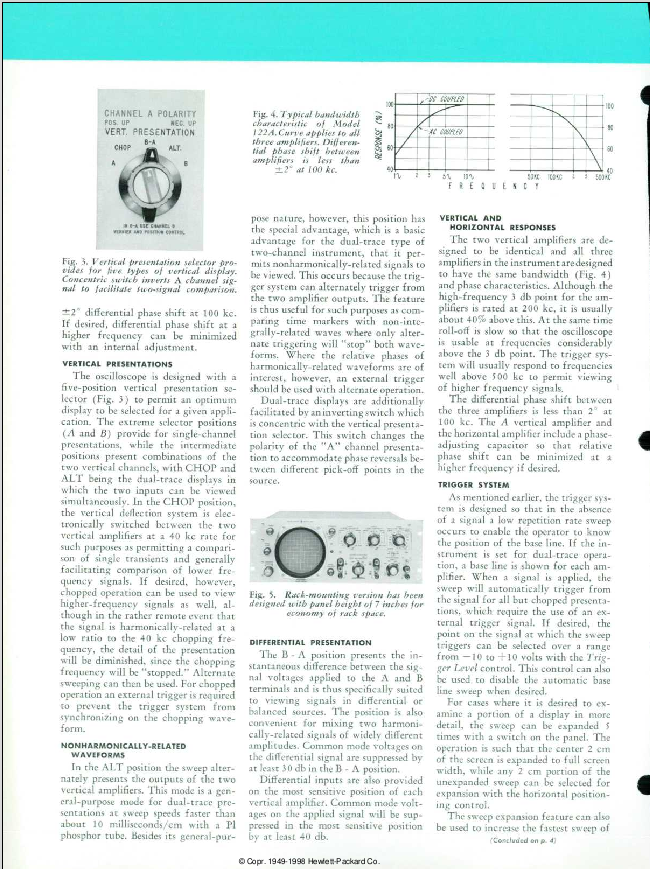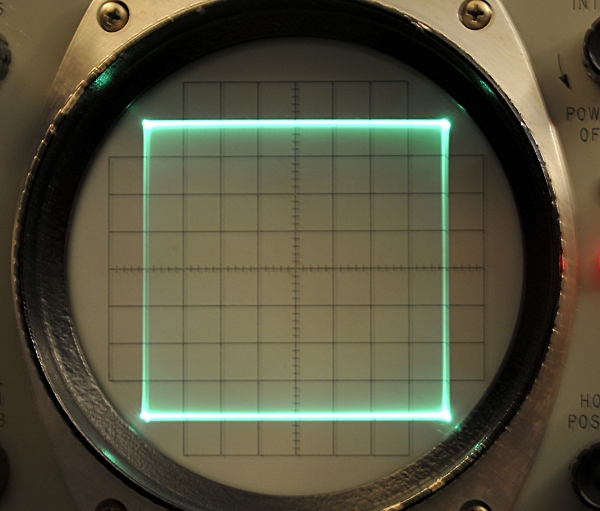This scope is a nice piece of HP history.
HP started building scopes in 1956. The first was the 130A, it was soon accompanied by the 150A. A scope for the high-end market (10 MHz was high-end in those days). These models where no competition for Tek, the market leader at that moment.
In 1958 the 130A was the base for the 122A that was introduced in the September 1958 edition of the Hewlett Packard Journal as a ” A Dual-Trace Automatic Base Line Oscilloscope for the DC – Several Hundred KC Range”.
This scope has a whopping 200 kHz bandwidth. It was in a few way innovative. HP used a mix of transistors and tubes. The inputs are banana busses but they can be used single ended, balanced or differential. So no need for an isolation transformer. The graticule was 10×10 divisions. That was more then average in those days. Graticule lighting was optional. It is a pitty mine does not have that. I like illuminated graticules but I was told the illuminated graticule was “invented” only for photographic use. In those days they had two ways to do a screen capture. The first one was taping thin paper to the graticule and use a pencil to draw the trace shining through the paper. An elegant but not very comfortable methode. The other was making a screenshot. That sounds more easy then it was. Also a risk because you had to wait until the negatives where developed and “printed” on photo-paper. (I use to do that for a hobby when I was young) Tektronix sold special scope camera’s in those days. You had to mount a sort of hinge mounting-plate around the graticule and that was used to mount the camara that covered the whole display. This way it was always at the right distance, there where no reflections but because the trace was rather bright the graticule was not visible, and so the illuminated graticule was born. And that was the main reason it was an option. Scope camera’s where often imposant structures. Like the Tektronix “polaroid” version in this link
This scope is the AR version. The R stands for rack mount.
This scope was used by the Dutch airforce in Amerfoort. It was a gift and it is not used for the last 10 years (thank you, Johan) . He bought it around 1976, so 37 years ago when he was 13 years old. The last army calibration sticker is dated 1975.
It should work but before I plug it in, I first clean it inside out, reform caps, test the tubes and transistors and bring it back to live.
Checking Voltage 50’s style 😉
